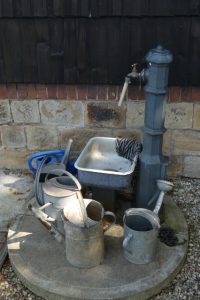With limited travel opportunities in 2020, as a result of the Corona pandemic, we traveled nearer to home, to the Czech Republic. Three weeks in July, high season as far as international tourists are concerened, but considerably less so this year, although the locals were present in greater numbers than ever. Lots of architecture, lots of culture, and quite a lot of greenery, too.
We are not the type that travels during the peak holiday season in Europe. July and August we spend at home, because the rest of the world is then happily holidaying – it is far too busy everywhere, far too many screaming kids, far too difficult to find affordable accommodation, and impossible to strike up a reasonable conversation with the locals, because they have only one thing on their mind: how do I get the most out of the tourist in the least possible time. And that is fair enough.
 02. Loket: We base ourselves in the charming little Medieval town of Loket, to get acquainted with the Czech reality of pastel houses, cobbled streets and beer breweries, as well as monasteries and castles in the surroundings.
02. Loket: We base ourselves in the charming little Medieval town of Loket, to get acquainted with the Czech reality of pastel houses, cobbled streets and beer breweries, as well as monasteries and castles in the surroundings.
Loket is in the western-most tip of the Czech Republic, an easy less-than-a day’s drive from our hometown in The Netherlands. We arrive on a Sunday, late afternoon, beautiful weather, and teeming with tourists. Perhaps our gamble – the Europeans are going to stay at home this summer – doesn’t pay off, after all? But it turns out that it is a public holiday, and there is a free pop concert, for which the locals have turned up in masses. A day later everybody has gone again, and we are the only guests in the hotel.
 03. the health resorts: The health resorts of Karlsbad and Marienbad, now called Karlovy Vary and Marianske Lazne, have retained much of their Fin de Siecle grandeur, when the world’s elite came to the spas in Bohemia.
03. the health resorts: The health resorts of Karlsbad and Marienbad, now called Karlovy Vary and Marianske Lazne, have retained much of their Fin de Siecle grandeur, when the world’s elite came to the spas in Bohemia.
Hot waters have attracted ill people for centuries. In the time preceding modern medicine hot water, preferably smelly and mineral-rich, has been prescribed by doctors as a cure for a whole range of ailments. And there are perhaps few health resorts more famous than the Bohemian spas, which were de rigueur with the European, German-speaking empire elite during the late 19th and early 20th Century.
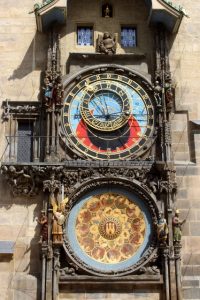 04. Prague: The wonderful Central European city of Prague oozes history from all its pores, medieval to recent, mostly expressed through its beautiful architecture. And all of that without so many tourists!
04. Prague: The wonderful Central European city of Prague oozes history from all its pores, medieval to recent, mostly expressed through its beautiful architecture. And all of that without so many tourists!
What can I say about Prague that others haven’t said before me. Well, I will mention the Czech Cubist movement, of which I had never heard before, but I’ll do that in a separate entry. And for the rest, yes, this city is as lovely and wonderful as everybody claims. We weren’t always lucky with the weather, which went from rain and dark clouds to brilliant sunshine, and from 31o C one day to 15o C the next, but overall we managed a good few days wandering around, seeing the major highlights, and above all, admiring the architecture – stiff necks from looking up all the time.
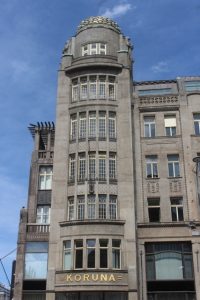 05. the Corona regime: We went to the Czch Republic because of Corona, or rather, because of the resultant lack of tourists. But we hadn’t expected a total lack of Corona awareness, as well.
05. the Corona regime: We went to the Czch Republic because of Corona, or rather, because of the resultant lack of tourists. But we hadn’t expected a total lack of Corona awareness, as well.
When we planned our summer trip, we did consider various options. We chose for the Czech Republic because it is relatively close to our home – less than a day’s drive – and we would have to deal with one Corona Covid-19 regime only.
 06. the Czech Cubism movement: One of the surprises of this trip is the discovery of the Czech Cubism movement, which is spectacularly on view not only in various Prague museums, but also in some of the architecture.
06. the Czech Cubism movement: One of the surprises of this trip is the discovery of the Czech Cubism movement, which is spectacularly on view not only in various Prague museums, but also in some of the architecture.
I had never heard about Cubism in the Czech Republic. And what do I know about Cubism, anyhow, other than that a few famous painters like Picasso, Braque and Juan Gris experimented with the style at the beginning of the 20th Century. Only for it to die out again after WW I. But the Czech took Cubism much more seriously.
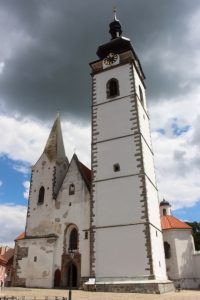 07. South Bohemia: Pisek and Prachatice: Descending into Southern Bohemia, the most touristic province of the Czech Republic, we encouter the lovely twows of Pisek and Prachatice, but also the with tourits overflowing Zvikov castle and the Sumava National Park.
07. South Bohemia: Pisek and Prachatice: Descending into Southern Bohemia, the most touristic province of the Czech Republic, we encouter the lovely twows of Pisek and Prachatice, but also the with tourits overflowing Zvikov castle and the Sumava National Park.
We have established that, indeed, there are few foreign tourists in the Czech Republic, just as we envisaged. But that doesn’t mean that there are no tourists at all in this country; the Czechs are avid travellers, and especially on Sundays!
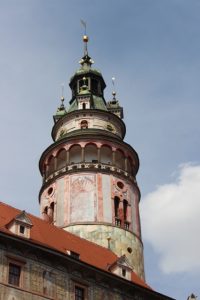 08. Cesky Krumlov: Cesky Krumlov is indeed one of the nicest medieval towns in the country, but can, at least in July, only be viewed together with lots of other tourists.
08. Cesky Krumlov: Cesky Krumlov is indeed one of the nicest medieval towns in the country, but can, at least in July, only be viewed together with lots of other tourists.
Billed as the most charming Medieval town of the Czech Republic, Cesky Krumlov is also – outside Prague, perhaps – the most touristic town in the country. True to form, another big castle cum palace dominates the town, in the form of a huge multi-floor grey stone block and a wedding cake-like round tower, whilst on both sides of the Vltava river lovely pastel coloured houses line the streets and several squares.
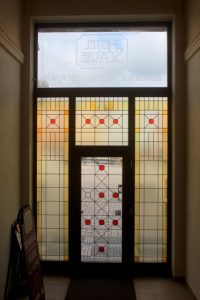 09. South Bohemia: Trebon and Pelrhimov: A travel day, ever further east, brings us to the rural village of Holasovice and to Trebon, with its carp lakes, before ending up in Pelrhimov. A bit heavy on architecture, I am afraid.
09. South Bohemia: Trebon and Pelrhimov: A travel day, ever further east, brings us to the rural village of Holasovice and to Trebon, with its carp lakes, before ending up in Pelrhimov. A bit heavy on architecture, I am afraid.
We decide to leave Prachatice early. It is a nice enough little town, and served us well as a base for the Sumava region and for Cesky Krumlov, but three nights had exhausted the town’s dining opportunities – which weren’t that fabulous, none of them. Time to move east and explore more of South Bohemia.
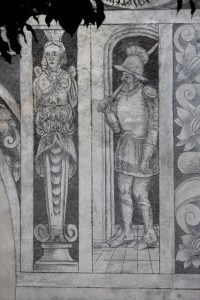 10. South Moravia: Telc and Slavonice: Moving into Moravia, Czech Republic’s eastern region, we enjoy the medieval square and palace of Telc and sgraffitoed Slavonice, as well as the mostly ruined Landstejn castle. The weather doesn’t help, today.
10. South Moravia: Telc and Slavonice: Moving into Moravia, Czech Republic’s eastern region, we enjoy the medieval square and palace of Telc and sgraffitoed Slavonice, as well as the mostly ruined Landstejn castle. The weather doesn’t help, today.
It is time to move further east, towards Moravia, that other half of the Czech Republic. Unfortunately, it is not a good day for pictures, it is largely overcast and occasional rain.
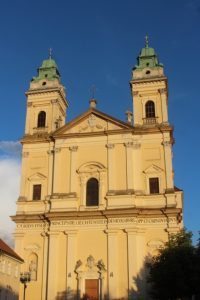 11. Valtice: In the Valtice and Lednice region the extravagant former palaces of the Lichtenstein family dominate, but this is also the most wellknown Czech wine area – with mixed results.
11. Valtice: In the Valtice and Lednice region the extravagant former palaces of the Lichtenstein family dominate, but this is also the most wellknown Czech wine area – with mixed results.
The area around Valtice and neighbouring Lednice is a good example of how European nobility operated in the Middle Ages. There are two palaces here, both until the expulsion of Germans in 1945 owned by the Lichtenstein family, those of present-day Grand Duchy fame. Oh, and before 1945 they also owned some 1600 km2 of land in the Czech Republic alone, ten times the size of the present-day Principality of Lichtenstein.
 12. Moravsky Kras: We have seen many caves before, and almost always they disappoint; Moravsky Kras is not different. But the old Communist-era factories nearby remain fascinating!
12. Moravsky Kras: We have seen many caves before, and almost always they disappoint; Moravsky Kras is not different. But the old Communist-era factories nearby remain fascinating!
The caves of Moravsky Kras have been so enthusiastically described in both guide books we carry, that we made an exception to the rule – the rule is: no caves, they are simply not interesting enough, we have seen too many already, they all look the same.
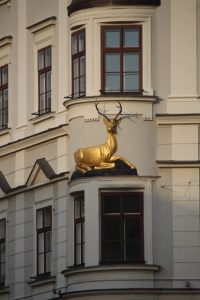 13. Olomouc and Brno: With pleasant but abandoned student town Olomouc as base, we go to Brno, the second largest city in Czech Republic, and a nice alternative to the many medieval towns we have seen so far.
13. Olomouc and Brno: With pleasant but abandoned student town Olomouc as base, we go to Brno, the second largest city in Czech Republic, and a nice alternative to the many medieval towns we have seen so far.
We have moved to Olomouc, an attractive student town and our next base in Moravia. Of course, in July there are no students, and it is very quiet in town: a local concert in the central square attracts perhaps 50 people, most terraces are less than half full, and that is not because of Corona fear.
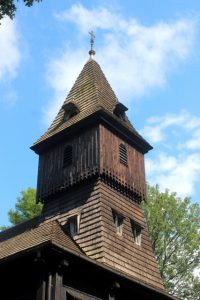 14. the wooden churches of Beskydy: In the beautiful Beskydy area in NE Moravia several villages still have an old wooden church, unusual these days. We spend the day looking for them, which was mostly successful.
14. the wooden churches of Beskydy: In the beautiful Beskydy area in NE Moravia several villages still have an old wooden church, unusual these days. We spend the day looking for them, which was mostly successful.
In the NE corner of the Czech Republic, towards the Slovak border, is an area called the Beskydy, hilly, wooded, but unlike other such areas in this country, not yet very touristic. What is more, my guidebook of 15 years had identified seven wooden churches. Having good memories of earlier visits to wooden churches, this is an opportunity not to be missed. So we set out relatively early from Olomouc, with a mission.
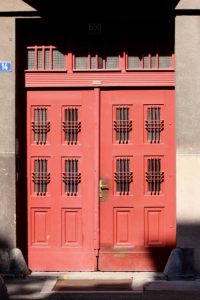 15. Hradec Kralove: Hradec Kralove is part an old medieval town, but much more is it a fascinating architectural Rondo-Cubism experiment of the early 20th Century.
15. Hradec Kralove: Hradec Kralove is part an old medieval town, but much more is it a fascinating architectural Rondo-Cubism experiment of the early 20th Century.
The first impression of Hradec Kralove is, once again, a Czech town with an old main square, pastel-coloured houses, a fountain, a townhall and a few Baroque and Gothic churches. Except that the square is so big that the cobbled stones have been replaced by tarmac. Terraces with parasols surround the square, a few remarkable buildings catch the eye, but overall, this is Czech main fare.
 16. Cesky Raj: Cesky Raj is one of the nicest Czech nature reserves, great for walks in the forest interspersed with huge sandstone outcrops.
16. Cesky Raj: Cesky Raj is one of the nicest Czech nature reserves, great for walks in the forest interspersed with huge sandstone outcrops.
We are on our way to Cesky Raj, the most famous nature reserve in the Czech Republic. Cesky Raj means Bohemian Paradise; we have encountered more instances where ‘Cesky’ – Chech – is translated as Bohemian, which is after all only a part of the country, albeit the dominant part.
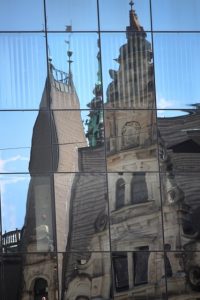 17. North Bohemia: Liberec and Litomerice: The road to Liberec and Litomarice leads past the usual town squares, but also a beautiful museum and an impressive basalt outcrop.
17. North Bohemia: Liberec and Litomerice: The road to Liberec and Litomarice leads past the usual town squares, but also a beautiful museum and an impressive basalt outcrop.
We are almost at the end of our trip, on the way to Litomerice. We drive through North Bohemia, not particularly pretty. This is the area where during the Communist era forests were chopped down, or otherwise destroyed by acid rain from the many heavy industries and the open-cast coal mining that was established here, in the name of progress. Well, a bit unfair perhaps, as the first factories and mining stem from the end of the 19th Century, but the Communist did much to expand the industrial program, at the expense of everything else.
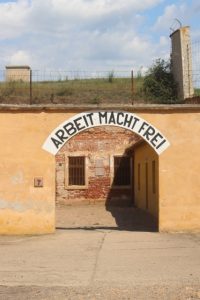 18. Theresienstadt: We finish our Czech journey in Terezin, a chilling relict from the Second World War, the prison and the Ghetto of what used to be known as Theresienstadt.
18. Theresienstadt: We finish our Czech journey in Terezin, a chilling relict from the Second World War, the prison and the Ghetto of what used to be known as Theresienstadt.
Perhaps we would have done better not to keep Theresienstadt – Terezin in Czech – for the end. A visit to this place, part concentration camp and Ghetto, part prison, is a thoroughly haunting experience. A depressing end to an otherwise uplifting journey.
 19. looking back at the Czech Republic: Traveling through the Czech Republic is a piece of cake, really, and there is enough to entertain yourself with in this well-developed and well-organised Central European country.
19. looking back at the Czech Republic: Traveling through the Czech Republic is a piece of cake, really, and there is enough to entertain yourself with in this well-developed and well-organised Central European country.
Of course we were opportunistic! During Corona times there are significantly fewer tourists in Prague than otherwise; our hotel estimated that the tourist industry was running at 20-30% capacity in July. So we managed to see Prague without the hordes. But the Czech republic is much more than Prague alone.
